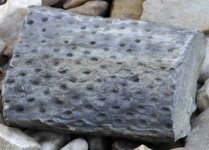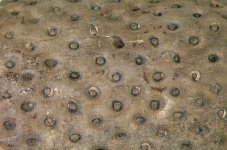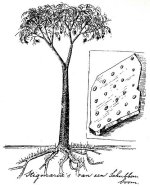Doug010255
Tenderfoot
- Apr 3, 2022
- 7
- 31
Could someone help me identify this fossil/rock I found in the creek in Southeast Ohio. It measures approximately 10" long and weighs about 2 pounds. Thanks in advance.










Thank you for your reply. No doubt, you have provided me a positive I.D.Welcome to Tnet. Nice find.
It appears to be a plant fossil of the kind collectively known as “Stigmaria”, and typically from the Pennsylvanian period. Stigmaria is a “form genus”, where the assignation is largely based on the shape and appearance, rather than a true assignation to actual genera or species of plants. There isn’t nearly enough information for detailed assignment to individual plant species. Nevertheless, it’s certain that they represent portions of “Lycopsid” trees such as Sigillaria and Lepidodendron. Like this (the first pic is an Ohio specimen):
View attachment 2019223 View attachment 2019224 View attachment 2019225
These were tall trees, up to 50 meters in height, and given that they were growing in swampy and marshy environments they needed extensive root structures to anchor and stabilise them in an upright position. It’s not known for sure whether fragmentary fossils are from portions of the trees that were above the ground or below it (including the possibility of aerial roots and being temporarily submerged in water/mud). The Stigmaria grouping is generally regarded as representative of root systems: rhizomes, rhizophores and massive highly-branched roots with rootlets extending from them. This kind of thing:
View attachment 2019226
The scars might be leaf scars, but most palaeontologists believe that the vast majority of circular scars seen are the attachment points for rootlets. There is a school of thought that, despite having the form and function of roots, these rootlets may have been biologically modified leaf structures as a genetic adaptation. The counter opinion is that they were true roots, resembling what we can see today on the closest living relatives of Lepidodendron… small aquatic and semi-aquatic quillworts in the genus Isoetes.
No, not ferrous. Thanks.is it ferrous?